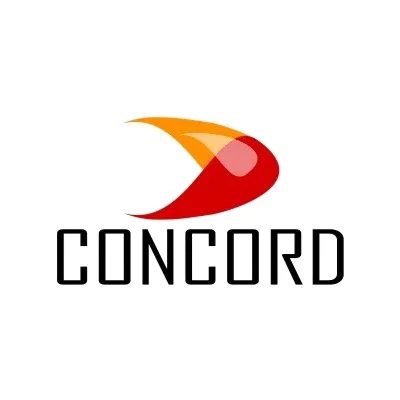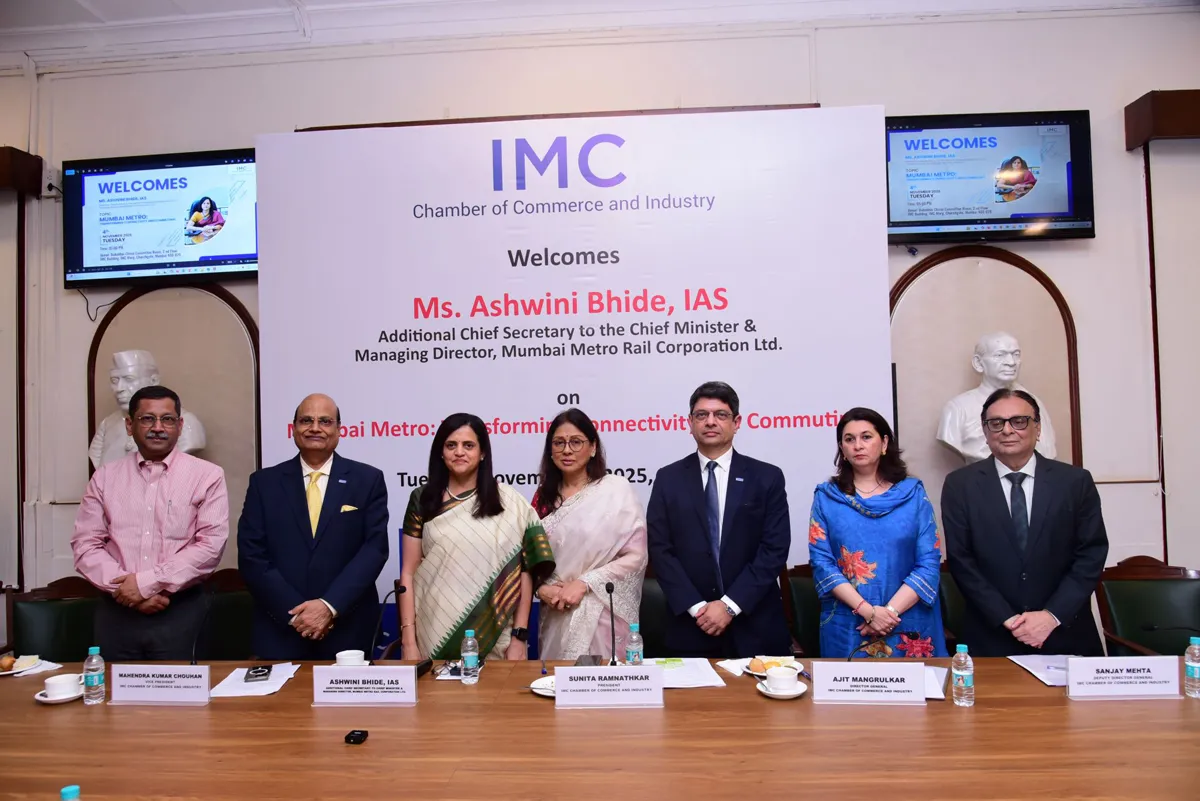- Home
- Real Estate
- Know more about technologies for tall buildings to be constructable and economically viable in India

Know more about technologies for tall buildings to be constructable and economically viable in India
Key technologies
Tunnel form and jump form: The most groundbreaking technology Mantri Developers has used is tunnel form. 'Theoretically, this allows us to cast one floor every two days,' says Pratik Mantri, Director, Mantri Developers. 'We are able to achieve a cycle of three days.
You will see this in action at our sites at Mantri Energia and Mantri Serenity.'
The jump-form shuttering system and tunnel form have enabled Supertech to achieve faster construction, high-quality surface finish, quality and accuracy with flexibility. 'These highly safe systems have built-in working platforms, guard rails and ladders suitable for tall buildings with over 40 floor levels,' says RK Arora, Chairman, Supertech. 'They are being used at the Spira Tower at the Supernova project, one of the tallest high-rise projects in India.'
Technology integrations aid construction as well as the backend of design conceptualisation and development. 'The jump formwork for the core and shell of the building effectively optimises construction turnaround time (TAT) to twice that of conventional techniques,' says Architect Yatin Patel, Founder Director, DSP Design Associates. 'It drastically reduces dependency on heavy construction equipment, saving on additional man days and delivering improved productivity. There is also a visible quality upgrade with regard to surface finish, precluding the need for added finishing on the facade.' The firm is also considering the use of tunnel formwork, 'which reduces the slab cycle for projects to three to five days as against five to seven days compared to jump formwork or a 7 to 11 days slab cycle for Mivan formwork.'
Auto climbing system and aluminium formwork system: Formwork is key to all Capacit'e Infraprojects' projects. 'We have a vast array of formwork technology based on the type of project we are handling,' says Rohit Katyal, Executive Director & CFO, Capacit'e Infraprojects.
'For example, for the 80-storeyed towers at Worli, we have deployed an auto climbing system for the core and an aluminium formwork system for the slabs, columns, beams and sheer walls. This ensures faster construction time at optimised construction cost. Other advantages are high quality and safety for our workforce.'
The Lodha Group has deployed aluminium shuttering in its Amara project in Thane, which has helped reduce the TAT by almost half and achieve a slab-to-slab cycle of 7 to 10 days. 'Owing to the light weight of the aluminium form enabling speedy construction, the homes are ready eight months ahead of schedule,' says Ramakrishnan P, COO, Lodha Group. 'During construction, it leads to fewer joints, thereby reducing leakages and enhancing durability. It also enables uniform quality of construction and integral and smooth finishing of the wall and slab; this smooth aluminium finish can be seen vividly on walls.
It is also cost-effective as the strong build-up of concrete needs no maintenance.'
Lodha Group uses automatic jump form for all its towers above 25 floors; for the others, it has deployed the aluminium shuttering system of late. 'Similarly, few off-site manufacturing techniques in MEP services are being deployed; these indirectly enable the effective use of quality manpower,' shares Ramakrishnan. 'We have also deployed aluminium composite panels extensively in some of our tall structures. Precast staircases and gypsum partition walls are some other methods we use to reduce time and cost, ensuring maximum efficiency.'
Mivan/S-Form: One key technology Kalpataru is putting to use in tall building projects, according to a spokesperson, is Mivan or S-Form formwork - an innovative technique for expeditious construction of buildings of repetitious nature. 'This is basically an operation to cast walls and slabs in one operation in a seven-day cycle with smooth surface finishes, thus eliminating or minimising the use of subsequent wet trades. The use of prefabricated aluminium shutters plates and specially designed structural steel props makes it easy for the formwork to move in and out or up and down and adjust the final height of the building block to achieve the desired size.'
Precast: Supertech has successfully deployed precast technology for faster and better quality construction. 'We adopted this to meet project deadlines,' explains Arora. 'Concrete is cast into a reusable mould, cured and transported to site; there, it is lifted into place. The end-product is of high aesthetic quality that does not require any plastering. This helps save 10-15 per cent cost compared to a conventional construction system.' Further, precast is a sustainable technology owing to its reusability. 'Its manufacturing and end-use have caused a positive impact on the surrounding environment owing to less pollution at site,' he adds. Precast technology has been deployed at projects such as Eco Village at Greater Noida (W), Golf Village at Yamuna Expressway and Upcountry at Yamuna Expressway.
Concrete pumps: High structures lead to higher vertical and horizontal load and wind pressure. 'One needs a construction technique that is easier, faster, better and can provide economies of scale,' says the Kalpataru spokesperson. 'Several of our projects feature concrete pumping and concrete mix design improvements. It is now common to mix concrete on site and pump concrete directly, even to the top of the building, using powerful concrete pumps.'
BIM: Capacit'e Infraprojects is also experimenting with the use of BIM to integrate design, execution, monitoring and control, and achieve economy of time and money, shares Katyal.
At the design end, DSP Design Associates' architecture and design studios use BIM to arrive at detailed visualisation and enable effective coordination. 'Adding virtual reality (VR) as a tool over BIM has been rewarding at the studio and the client end,' says Patel. 'It enables us to deliver error-free drawings and bill of quantities (BOQ) with extensive details at optimised timelines as opposed to conventional 2D drawings.'
Digital engineering and computational design: Digital engineering and computational design is proving a game-changer. 'Its application to tall building design has been our recent focus to achieve sustainability,' reveals Anil Hira, Director and Partner, BuroHappold Engineering.
'With advances in computer technology and access to huge amounts of digital data, it is becoming easy to carry out multiple test fits to flesh out and rapidly optimise building design. We are now thinking about a parametric-driven workflow, allowing us to make more informed decisions much earlier in the project's lifecycle, which can be progressively modified throughout the design process. Couple this with advanced simulation software and you can compare many options in terms of materials, quantities and mass to arrive at refined optimal solutions.'
Other techologies: Construction of high-rises demands an incredible amount of logistics and planning. 'Such towers require the placement of lakhs of cubic metres of concrete and thousands of tonne of reinforcement up to 200 m or more above ground. Also, the movement of MEP equipment and thousands of square metres of blocks, tiles, marble and granite, plasterboards and fixtures must be well-coordinated,' says the Kalpataru spokesperson. 'Now, we have passenger hoists, cranes to lift heavy materials, fire chutes for speedy evacuation, ARD (automatic rescue device) in lifts, fire-resistant elevators, etc.'
The tech benefits
Advanced technologies require a large upfront investment and a lot of time in training and revising internal processes and quality checks. The real benefit comes from repetition, says Mantri.
'For instance, only by designing future projects in a way that the same formwork can be used in multiple projects for its entire lifespan can the cost be justified.' He adds, 'We have partnered with Otis to get the latest elevators that conserve energy, along with many other features. This reduces operating expenses by 30 per cent. Many such examples can be quoted with respect to each aspect of design and execution.'
With the advent of newer technologies, the construction sector has been able to deliver complex projects in shorter timeframe with high quality output.
'These technologies rely less on skilled labour and deliver faster, smoother, high-quality surface finished products,' says Arora.
Kalpataru uses Mivan and S-Form shuttering systems from Korea across most of its high-rise projects. These and table forms help achieve better quality construction, with significant reduction in the concrete slab cycle time.
Implementation of technology can help achieve project timelines as well as workforce safety, says Katyal. 'For example, lightweight formwork systems like Aerodeck can be carried without any heavy equipment and aluminium formwork systems eliminate plastering on external walls, which can be dangerous.' In his view, technology affects construction project in three ways: Reducing dependency on labour; reducing project timelines by almost 30 per cent in some cases (with aluminium formwork system, Capacit'e achieved a slab cycle of five days, which is otherwise 15-18 days); and reducing cost - initial investment costs can be easily recovered as most of these technologies can be deployed on multiple projects.
The sustainability impact
While the array of technologies available and choices of implementation affect return of investment over time, it is hard to definitively lay down standards for the same. 'The payback period typically varies according to project type and scale,' says Patel. 'The most common implications can be the use of smart elevators that save on passenger trips and subsequent energy consumption, specifications that enable buildings to use 30-50 per cent less water and energy, efficiently and optimally designed skin for the building to reduce cost of lighting, cooling and maintenance and savings in lifecycle maintenance costs.'
By deploying smart and sustainable technologies, 'we deliver projects early, leading to substantial savings in overheads,' says Ramakrishnan. Lodha Group is currently exploring the possibility of a composite steel structure for a 40-storey commercial tower; it expects this will help deliver the project in 30-36 months.
'We consider the three pillars of sustainability as environment, social and economy,' says Hira. 'For a tall building, the simplest and most effective sustainable solution is to use less material from concrete, steel, glazing, mechanical plants, etc. Optimal use of materials as an initial capital cost followed by lifecycle costing to derive overall efficiency in terms of cost and energy is a high priority for us.
As for structural engineering, simply investigating several options for lateral load-resisting structural systems with architects and owners and then working closely with specialist engineers, such as geotechnical and wind engineers, can often lead to massive sustainable benefits simply by optimising material savings in concrete and steel. The key is collaboration.'
Implementing advanced technologies such as precast, formwork, concrete pumps, shock absorbers, elevators, glazing, etc, in tall buildings accrues sustainable benefits such as speed and quality of construction, says Alpa Sheth, Partner, Vakil Mehta Sheth (VMS) Group. The firm is putting modular shuttering to use in its tall building projects for speedy project delivery and cost-effectiveness.
'For tall buildings, a simple example would be optimising the pump's power rating by analysing its end-use operational profile,' shares Krishnendu Mukherjee, Director and Partner, BuroHappold Engineering.
'An experienced engineer can match this to a suitable motor starter to save energy. Another example would be selecting a building's glazing in conjunction with the architect, fatade and MEP engineer. By collaborating on glazing properties, we can find a solution that balances day-lighting, thermal comfort and the desire to reduce air-conditioning load. Both strategies will save energy; for each kWh of energy saved, we are reducing a buildings CO2 footprint.' Strategies like this can help find a balance initial CAPEX as well as ongoing OPEX. Mukherjee adds that sustainable technologies like solar panels or solar thermal can help reduce a building's energy profile, while variable speed drives can reduce the energy footprint of pumps and motors. Likewise, LED lighting reduces lighting power densities. 'All these ultimately help optimise plant sizes within buildings. Combining this with advanced building management systems to monitor and record energy usage will further improve investment returns.'
There is evidence that minimal capital investments in mechanical services for a tall building and improving the work environment can increase the value of a building by up to 10-20 per cent, according to Hira. However, to realise this value, the stakeholders have to think long term.
All considered, while an array of technologies is available, their application depends on the degree of collaboration between all stakeholders, including architects, engineers, contractors, owners and developers, and government authorities.
ArchiTAKE
Architect Yatin Patel, Founder Director, DSP Design Associates, points to some of the benefits of advanced technological integrations:
High-performance glazing: A double-glazed, high-performance facade helps reduce heat gain, thereby enabling savings in air-conditioning. Self-cleaning facade options also help reduce maintenance cost. Solar energy can be harnessed by exploring possibilities for integrating photovoltaic cells with the facade.
Smart lighting: This is an obvious consideration. DSP Design has been, as default protocol, practising green measures. This includes occupancy sensor-based lighting to optimise power consumption with high-efficiency fixtures with automated dimming controls as prominent highlights.
Intelligent building management systems: Factors like minimising energy consumption with the use of VRV to enhance indoor air quality by smartly handling cooling requirements of various zones, use of smart meters and flow-sensing fixtures to optimise water savings, integrated rainwater harvesting and treatment systems, sewage or wastewater treatment plants, quick and responsive fire detection and fighting systems and smart access and security controls make up a holistic intelligent building management system.
The Fire-Safety Imperative
Recent fire breakouts in the country, especially in Mumbai, which alone has more than 4,000 high-rise buildings, are nothing new. While the city cries for its high-rises to be fire-safe, what does the National Building Code say? PropTiger's PropGuide elaborates upon seven aspects addressed by India's National Building Code 2005 (Part 4) about fire and life safety.
Categories of buildings: According to the code, buildings are classified into nine categories based on the character of the occupancy; they need to put in place fire-safety standards based on their category. While residential buildings come under Group A, industrial buildings are demarcated under Group G. Business building units are kept under Group E and storage buildings under Group H. Residential buildings are further categorised into six sub-categories.
Residential buildings: The code defines residential buildings as constructions 'in which sleeping accommodation is provided for normal residential purposes with or without cooking or dining or both facilities, except any building classified under Group C'. Group C covers institutional buildings.
Dangers to avoid: According to the code, 'Every building shall be constructed, equipped, maintained and operated as to avoid undue danger to the life and safety of the occupants from fire, smoke, fumes or panic during the time period necessary for escape.'
Rules for exits: Under the code, while doorways, corridors, passageways are defined as exits, elevators do not come under that category.
The code says no alterations should be made in a building to reduce the number, width or protection of exits as required.
Mandatory fire safety drills: Unless a plan for orderly and systematic evacuation is prepared, fire drills should be conducted at least once in three months in high-rise buildings during the first two years of construction, according to the code. After that, such drills have to be conducted once in six months.
Fire-detection and alarm systems: In buildings of large sizes where a fire itself may not provide adequate warning to occupants, automatic fire-detection and alarm facilities are a must.
Installation of fire extinguishers: Based on occupancy, use and height, all buildings have to be protected by fire extinguishers, wet risers, automatic sprinkler installations, water sprays, etc.
The City of Tall Dreams
With a population of 1.24 crore (Census 2011), Mumbai alone has more than 4,000 high-rise buildings and the sixth highest number of skyscrapers in the world. Named the second most crowded city after Dhaka, 31,700 people exist on 1 sq km of space in this maximum city.
With this in mind, the new Mumbai Development Plan (DP) 2034 allows buildings to go higher in the island city: FSI has been raised up to 3 for residential properties and 5 from the earlier 1.33 for commercial properties, paving the way for the space-starved city to have more available land to build homes and commercial spaces.
According to the new Mumbai DP, buildings up to 120 m (from the earlier 70 m) do not need high-rise committee clearance any longer. This move will be advantageous for end-users, as builders can now reduce the concrete footprint by building taller, thus opening up more open and amenity spaces,' says Mayur Shah, Managing Director, Marathon Group. 'The number of high-rise projects in the city will surely spurt owing to this move. The main advantage is the opportunity to build more homes per square feet of available land: Mumbai is land-starved and the only way forward is to build high-rises with efficient master planning. With the new DP also allowing for an increase in FSI, builders will have to build taller structures to consume the FSI.'
'Even now, owing to limited plots of limited size, builders are constructing high-rise towers in Mumbai,' reasons Venkatraman B, COO, Rustomjee Group. 'With land becoming a rare commodity and land rates escalating, high-rise buildings are the only way to reduce the gap between demand and supply.'
The DP also mandates that high-rises over 70 m will necessarily be provided with fire-escape shafts or a controlled lowering device for evacuation in every wing adjacent to the staircase. In addition, in buildings taller than 70 m, one elevator should be reserved to carry freight. 'Builders have to undertake the utmost safety and security measures to give residents a safe and better place to live,' adds Venkatraman. All buildings need to be equipped for fire emergencies with the introduction of fire chutes, fire lifts, etc. Shah adds, 'Important aspects of dealing with safety measures in high-rises include dissemination of information, training, AMC contract management and skill-based interventions.'
- Seraphina d'souza
India currently has 50 completed tall buildings of 150 m+ and 52 under construction. Another three buildings 300 m+ tall are currently under construction. These tall, green skyscrapers are the new landmarks of India. But to ensure the sustainability and safety of these vertical cities, industry professionals need to be armed with technologies and know-how. Key technologies Tunnel form and jump form: The most groundbreaking technology Mantri Developers has used is tunnel form. 'Theoretically, this allows us to cast one floor every two days,' says Pratik Mantri, Director, Mantri Developers. 'We are able to achieve a cycle of three days. You will see this in action at our sites at Mantri Energia and Mantri Serenity.' The jump-form shuttering system and tunnel form have enabled Supertech to achieve faster construction, high-quality surface finish, quality and accuracy with flexibility. 'These highly safe systems have built-in working platforms, guard rails and ladders suitable for tall buildings with over 40 floor levels,' says RK Arora, Chairman, Supertech. 'They are being used at the Spira Tower at the Supernova project, one of the tallest high-rise projects in India.' Technology integrations aid construction as well as the backend of design conceptualisation and development. 'The jump formwork for the core and shell of the building effectively optimises construction turnaround time (TAT) to twice that of conventional techniques,' says Architect Yatin Patel, Founder Director, DSP Design Associates. 'It drastically reduces dependency on heavy construction equipment, saving on additional man days and delivering improved productivity. There is also a visible quality upgrade with regard to surface finish, precluding the need for added finishing on the facade.' The firm is also considering the use of tunnel formwork, 'which reduces the slab cycle for projects to three to five days as against five to seven days compared to jump formwork or a 7 to 11 days slab cycle for Mivan formwork.' Auto climbing system and aluminium formwork system: Formwork is key to all Capacit'e Infraprojects' projects. 'We have a vast array of formwork technology based on the type of project we are handling,' says Rohit Katyal, Executive Director & CFO, Capacit'e Infraprojects. 'For example, for the 80-storeyed towers at Worli, we have deployed an auto climbing system for the core and an aluminium formwork system for the slabs, columns, beams and sheer walls. This ensures faster construction time at optimised construction cost. Other advantages are high quality and safety for our workforce.' The Lodha Group has deployed aluminium shuttering in its Amara project in Thane, which has helped reduce the TAT by almost half and achieve a slab-to-slab cycle of 7 to 10 days. 'Owing to the light weight of the aluminium form enabling speedy construction, the homes are ready eight months ahead of schedule,' says Ramakrishnan P, COO, Lodha Group. 'During construction, it leads to fewer joints, thereby reducing leakages and enhancing durability. It also enables uniform quality of construction and integral and smooth finishing of the wall and slab; this smooth aluminium finish can be seen vividly on walls. It is also cost-effective as the strong build-up of concrete needs no maintenance.' Lodha Group uses automatic jump form for all its towers above 25 floors; for the others, it has deployed the aluminium shuttering system of late. 'Similarly, few off-site manufacturing techniques in MEP services are being deployed; these indirectly enable the effective use of quality manpower,' shares Ramakrishnan. 'We have also deployed aluminium composite panels extensively in some of our tall structures. Precast staircases and gypsum partition walls are some other methods we use to reduce time and cost, ensuring maximum efficiency.' Mivan/S-Form: One key technology Kalpataru is putting to use in tall building projects, according to a spokesperson, is Mivan or S-Form formwork - an innovative technique for expeditious construction of buildings of repetitious nature. 'This is basically an operation to cast walls and slabs in one operation in a seven-day cycle with smooth surface finishes, thus eliminating or minimising the use of subsequent wet trades. The use of prefabricated aluminium shutters plates and specially designed structural steel props makes it easy for the formwork to move in and out or up and down and adjust the final height of the building block to achieve the desired size.' Precast: Supertech has successfully deployed precast technology for faster and better quality construction. 'We adopted this to meet project deadlines,' explains Arora. 'Concrete is cast into a reusable mould, cured and transported to site; there, it is lifted into place. The end-product is of high aesthetic quality that does not require any plastering. This helps save 10-15 per cent cost compared to a conventional construction system.' Further, precast is a sustainable technology owing to its reusability. 'Its manufacturing and end-use have caused a positive impact on the surrounding environment owing to less pollution at site,' he adds. Precast technology has been deployed at projects such as Eco Village at Greater Noida (W), Golf Village at Yamuna Expressway and Upcountry at Yamuna Expressway. Concrete pumps: High structures lead to higher vertical and horizontal load and wind pressure. 'One needs a construction technique that is easier, faster, better and can provide economies of scale,' says the Kalpataru spokesperson. 'Several of our projects feature concrete pumping and concrete mix design improvements. It is now common to mix concrete on site and pump concrete directly, even to the top of the building, using powerful concrete pumps.' BIM: Capacit'e Infraprojects is also experimenting with the use of BIM to integrate design, execution, monitoring and control, and achieve economy of time and money, shares Katyal. At the design end, DSP Design Associates' architecture and design studios use BIM to arrive at detailed visualisation and enable effective coordination. 'Adding virtual reality (VR) as a tool over BIM has been rewarding at the studio and the client end,' says Patel. 'It enables us to deliver error-free drawings and bill of quantities (BOQ) with extensive details at optimised timelines as opposed to conventional 2D drawings.' Digital engineering and computational design: Digital engineering and computational design is proving a game-changer. 'Its application to tall building design has been our recent focus to achieve sustainability,' reveals Anil Hira, Director and Partner, BuroHappold Engineering. 'With advances in computer technology and access to huge amounts of digital data, it is becoming easy to carry out multiple test fits to flesh out and rapidly optimise building design. We are now thinking about a parametric-driven workflow, allowing us to make more informed decisions much earlier in the project's lifecycle, which can be progressively modified throughout the design process. Couple this with advanced simulation software and you can compare many options in terms of materials, quantities and mass to arrive at refined optimal solutions.' Other techologies: Construction of high-rises demands an incredible amount of logistics and planning. 'Such towers require the placement of lakhs of cubic metres of concrete and thousands of tonne of reinforcement up to 200 m or more above ground. Also, the movement of MEP equipment and thousands of square metres of blocks, tiles, marble and granite, plasterboards and fixtures must be well-coordinated,' says the Kalpataru spokesperson. 'Now, we have passenger hoists, cranes to lift heavy materials, fire chutes for speedy evacuation, ARD (automatic rescue device) in lifts, fire-resistant elevators, etc.' The tech benefits Advanced technologies require a large upfront investment and a lot of time in training and revising internal processes and quality checks. The real benefit comes from repetition, says Mantri. 'For instance, only by designing future projects in a way that the same formwork can be used in multiple projects for its entire lifespan can the cost be justified.' He adds, 'We have partnered with Otis to get the latest elevators that conserve energy, along with many other features. This reduces operating expenses by 30 per cent. Many such examples can be quoted with respect to each aspect of design and execution.' With the advent of newer technologies, the construction sector has been able to deliver complex projects in shorter timeframe with high quality output. 'These technologies rely less on skilled labour and deliver faster, smoother, high-quality surface finished products,' says Arora. Kalpataru uses Mivan and S-Form shuttering systems from Korea across most of its high-rise projects. These and table forms help achieve better quality construction, with significant reduction in the concrete slab cycle time. Implementation of technology can help achieve project timelines as well as workforce safety, says Katyal. 'For example, lightweight formwork systems like Aerodeck can be carried without any heavy equipment and aluminium formwork systems eliminate plastering on external walls, which can be dangerous.' In his view, technology affects construction project in three ways: Reducing dependency on labour; reducing project timelines by almost 30 per cent in some cases (with aluminium formwork system, Capacit'e achieved a slab cycle of five days, which is otherwise 15-18 days); and reducing cost - initial investment costs can be easily recovered as most of these technologies can be deployed on multiple projects. The sustainability impact While the array of technologies available and choices of implementation affect return of investment over time, it is hard to definitively lay down standards for the same. 'The payback period typically varies according to project type and scale,' says Patel. 'The most common implications can be the use of smart elevators that save on passenger trips and subsequent energy consumption, specifications that enable buildings to use 30-50 per cent less water and energy, efficiently and optimally designed skin for the building to reduce cost of lighting, cooling and maintenance and savings in lifecycle maintenance costs.' By deploying smart and sustainable technologies, 'we deliver projects early, leading to substantial savings in overheads,' says Ramakrishnan. Lodha Group is currently exploring the possibility of a composite steel structure for a 40-storey commercial tower; it expects this will help deliver the project in 30-36 months. 'We consider the three pillars of sustainability as environment, social and economy,' says Hira. 'For a tall building, the simplest and most effective sustainable solution is to use less material from concrete, steel, glazing, mechanical plants, etc. Optimal use of materials as an initial capital cost followed by lifecycle costing to derive overall efficiency in terms of cost and energy is a high priority for us. As for structural engineering, simply investigating several options for lateral load-resisting structural systems with architects and owners and then working closely with specialist engineers, such as geotechnical and wind engineers, can often lead to massive sustainable benefits simply by optimising material savings in concrete and steel. The key is collaboration.' Implementing advanced technologies such as precast, formwork, concrete pumps, shock absorbers, elevators, glazing, etc, in tall buildings accrues sustainable benefits such as speed and quality of construction, says Alpa Sheth, Partner, Vakil Mehta Sheth (VMS) Group. The firm is putting modular shuttering to use in its tall building projects for speedy project delivery and cost-effectiveness. 'For tall buildings, a simple example would be optimising the pump's power rating by analysing its end-use operational profile,' shares Krishnendu Mukherjee, Director and Partner, BuroHappold Engineering. 'An experienced engineer can match this to a suitable motor starter to save energy. Another example would be selecting a building's glazing in conjunction with the architect, fatade and MEP engineer. By collaborating on glazing properties, we can find a solution that balances day-lighting, thermal comfort and the desire to reduce air-conditioning load. Both strategies will save energy; for each kWh of energy saved, we are reducing a buildings CO2 footprint.' Strategies like this can help find a balance initial CAPEX as well as ongoing OPEX. Mukherjee adds that sustainable technologies like solar panels or solar thermal can help reduce a building's energy profile, while variable speed drives can reduce the energy footprint of pumps and motors. Likewise, LED lighting reduces lighting power densities. 'All these ultimately help optimise plant sizes within buildings. Combining this with advanced building management systems to monitor and record energy usage will further improve investment returns.' There is evidence that minimal capital investments in mechanical services for a tall building and improving the work environment can increase the value of a building by up to 10-20 per cent, according to Hira. However, to realise this value, the stakeholders have to think long term. All considered, while an array of technologies is available, their application depends on the degree of collaboration between all stakeholders, including architects, engineers, contractors, owners and developers, and government authorities. ArchiTAKE Architect Yatin Patel, Founder Director, DSP Design Associates, points to some of the benefits of advanced technological integrations: High-performance glazing: A double-glazed, high-performance facade helps reduce heat gain, thereby enabling savings in air-conditioning. Self-cleaning facade options also help reduce maintenance cost. Solar energy can be harnessed by exploring possibilities for integrating photovoltaic cells with the facade. Smart lighting: This is an obvious consideration. DSP Design has been, as default protocol, practising green measures. This includes occupancy sensor-based lighting to optimise power consumption with high-efficiency fixtures with automated dimming controls as prominent highlights. Intelligent building management systems: Factors like minimising energy consumption with the use of VRV to enhance indoor air quality by smartly handling cooling requirements of various zones, use of smart meters and flow-sensing fixtures to optimise water savings, integrated rainwater harvesting and treatment systems, sewage or wastewater treatment plants, quick and responsive fire detection and fighting systems and smart access and security controls make up a holistic intelligent building management system. The Fire-Safety Imperative Recent fire breakouts in the country, especially in Mumbai, which alone has more than 4,000 high-rise buildings, are nothing new. While the city cries for its high-rises to be fire-safe, what does the National Building Code say? PropTiger's PropGuide elaborates upon seven aspects addressed by India's National Building Code 2005 (Part 4) about fire and life safety. Categories of buildings: According to the code, buildings are classified into nine categories based on the character of the occupancy; they need to put in place fire-safety standards based on their category. While residential buildings come under Group A, industrial buildings are demarcated under Group G. Business building units are kept under Group E and storage buildings under Group H. Residential buildings are further categorised into six sub-categories. Residential buildings: The code defines residential buildings as constructions 'in which sleeping accommodation is provided for normal residential purposes with or without cooking or dining or both facilities, except any building classified under Group C'. Group C covers institutional buildings. Dangers to avoid: According to the code, 'Every building shall be constructed, equipped, maintained and operated as to avoid undue danger to the life and safety of the occupants from fire, smoke, fumes or panic during the time period necessary for escape.' Rules for exits: Under the code, while doorways, corridors, passageways are defined as exits, elevators do not come under that category. The code says no alterations should be made in a building to reduce the number, width or protection of exits as required. Mandatory fire safety drills: Unless a plan for orderly and systematic evacuation is prepared, fire drills should be conducted at least once in three months in high-rise buildings during the first two years of construction, according to the code. After that, such drills have to be conducted once in six months. Fire-detection and alarm systems: In buildings of large sizes where a fire itself may not provide adequate warning to occupants, automatic fire-detection and alarm facilities are a must. Installation of fire extinguishers: Based on occupancy, use and height, all buildings have to be protected by fire extinguishers, wet risers, automatic sprinkler installations, water sprays, etc. The City of Tall Dreams With a population of 1.24 crore (Census 2011), Mumbai alone has more than 4,000 high-rise buildings and the sixth highest number of skyscrapers in the world. Named the second most crowded city after Dhaka, 31,700 people exist on 1 sq km of space in this maximum city. With this in mind, the new Mumbai Development Plan (DP) 2034 allows buildings to go higher in the island city: FSI has been raised up to 3 for residential properties and 5 from the earlier 1.33 for commercial properties, paving the way for the space-starved city to have more available land to build homes and commercial spaces. According to the new Mumbai DP, buildings up to 120 m (from the earlier 70 m) do not need high-rise committee clearance any longer. This move will be advantageous for end-users, as builders can now reduce the concrete footprint by building taller, thus opening up more open and amenity spaces,' says Mayur Shah, Managing Director, Marathon Group. 'The number of high-rise projects in the city will surely spurt owing to this move. The main advantage is the opportunity to build more homes per square feet of available land: Mumbai is land-starved and the only way forward is to build high-rises with efficient master planning. With the new DP also allowing for an increase in FSI, builders will have to build taller structures to consume the FSI.' 'Even now, owing to limited plots of limited size, builders are constructing high-rise towers in Mumbai,' reasons Venkatraman B, COO, Rustomjee Group. 'With land becoming a rare commodity and land rates escalating, high-rise buildings are the only way to reduce the gap between demand and supply.' The DP also mandates that high-rises over 70 m will necessarily be provided with fire-escape shafts or a controlled lowering device for evacuation in every wing adjacent to the staircase. In addition, in buildings taller than 70 m, one elevator should be reserved to carry freight. 'Builders have to undertake the utmost safety and security measures to give residents a safe and better place to live,' adds Venkatraman. All buildings need to be equipped for fire emergencies with the introduction of fire chutes, fire lifts, etc. Shah adds, 'Important aspects of dealing with safety measures in high-rises include dissemination of information, training, AMC contract management and skill-based interventions.' - Seraphina d'souza

Concord Control Systems Limited Reports ~85% YoY Growth in H1 FY26
Concord Control Systems Limited (BSE: CNCRD | 543619), India’s leading manufacturer of embedded electronic systems and critical electronic solutions, announced its unaudited financial results for the half year ended September 30, 2025.Financial Highlights – H1 FY26 (YoY Comparison)Revenue from Operations rose to ₹815.45 million, up from ₹497.53 million in H1 FY25, marking a 63.90% year-on-year growth.EBITDA increased to ₹217.34 million, compared to ₹142 million in the same period last year.EBITDA Margin stood at 26.65%, compared to 28.54% in H1 FY25, with the decline attributed to ..

Gateway Distriparks Announces Q2 FY25 Results
Gateway Distriparks Limited (GDL), one of India’s leading multimodal logistics providers, announced its financial results for the quarter ended 30 September 2025.For Q2, the company reported total revenue of INR 154.8 crore (H1: INR 316.9 crore), EBITDA of INR 20.56 crore (H1: INR 45.65 crore), PBT of INR –4.23 crore (H1: INR –0.28 crore), and PAT of INR –2.91 crore (H1: INR –0.37 crore). The company stated that these numbers reflect the consolidation of accounts following Snowman Logistics transitioning from an associate company to a subsidiary in December 2024.Commenting on the per..

Last-Mile Connectivity a Prime Focus, Says Ms. Ashwini Bhide,
The IMC Chamber of Commerce and Industry (IMC) hosted a high-impact Managing Committee session today on the theme “Mumbai Metro: Transforming Connectivity and Commuting.” The session featured an insightful address by Ms. Ashwini Bhide, Managing Director, Mumbai Metro Rail Corporation Ltd. (MMRCL), who shared updates on key transport infrastructure developments across Mumbai and the MMR region.Emphasising the city’s critical economic role, Ms. Bhide noted, “Mumbai is the economic powerhouse of Maharashtra, with more than 95% of the region’s population living in urban areas. As Maharas..
Latest Updates
Recommended for you
Advertisement
Subscribe to Our Newsletter
Get daily newsletters around different themes from Construction world.
Advertisement
subscribe to the newsletter
Don't miss out on valuable insights and opportunities
to connect with like minded professionals
















